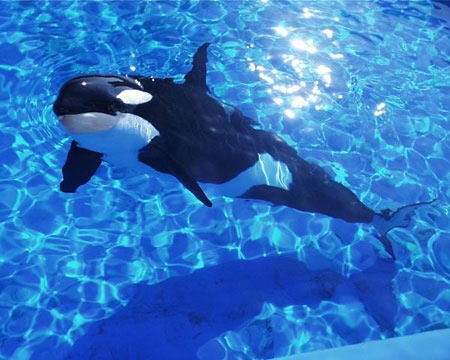

Meanwhile, the Northern Residents and transients were getting hit as well. The captures up there started with Namu and continued longer than the Washington captures.
The second capture up north, in Port Hardy, was also a one-orca capture. Orky, probably from the I11 pod, was captured here in 1967.
The first BIG capture happened a year later.
The reason the northern captures were a bit slower coming and, eventually, produced less whales, is probably because its harder to get access to the whales up there. Down south, the pods will come within five feet of the shore. Up in Johnstone Strait, not only do the orcas stay within mostly uninhabited land, they tend to go wherever they please, which is often where no one can find them.
But find them, eventually they did.
In April 1968, seven fishermen on four boats trapped a pod of northern residents in Pender Harbour. Later, through sound recordings at the time, researchers discovered this was the A5 pod, prosperous at the time. Captors took 8 whales from the capture. Hyak and Irving were held at Pender Harbour, until Irving escaped four months later, and Hyak was released a year later. The others weren't so lucky. Natsidalia, also held in the harbour, died 7 months later. Her son, however, who was captured with her and named Tung-Jen and later Hyak2, was sent to Vancouver Aquarium, where he became the longest living orca in captivity at the time, surviving 23 years. Corky was sent to Marineland California, along with Orky2. They joined Orky the first. Orky died a year later, Corky the year after that. Kianu went to Marine World California along with Bonnie, where they both gave birth to still-born calves. Bonnie died of complications during the birth, while Kianu was moved to World Safari, Japan, where she died 12 years later.
Three months later, another young female, Tula, was captured near Malcolm Island and sent to the Netherlands, where she died another 3 months later.
After the 1968 capture, the orcas refused to enter Pender Harbour. When they did, their suspicions were proven right.
In December 1969, a pod of whales entered the harbour, probably to take shelter from a storm. Of the 12 whales, four were taken into nets. The next morning, the rest of the family was still there, so they were taken into a separate net.
A short while later, one mature bull ripped through the nets and managed to escape. He came back and ripped in and out of the nets. None of the other whales followed him, so he simply stayed drifting around the nets for a few days. Then one morning he left and we never saw him again.

After that, the only whale who actually moved was an odd whale with weird tumour-like things at the corner of her mouth. Because of them, the humans weren't planning to sell her. The whale, later identified as Saddle (A14) paced the nets.
The next day, the mature whales who were too big and too much hassle to sell were released. These whales were later identified as Saddle, Top Notch (A5), Eve (A9), and a whale called the 'wide-nicked cow', who may have been Licka (A8).
Almost as soon as they were freed, among the clamour and loud noise and nets, Saddle gave birth to a calf! A few days later, she rejoined Top Notch, Eve and the mysterious cow, and they left.
For the rest of the whales, everything wasn't that great. Three whales were sent to Marineland California: an unnamed calf and Patches, most likely the children of Saddle, and Corky2, most likely the daughter of Stripe (A23). There they joined Orky2. Patches died the next year, and the calf the year after that. Corky2 survived, however, mating with Orky2 and giving birth to SEVEN calves....none of which survived longer than 42 days.
Calypso, another whale from the capture, went to Cleethorpes Zoo in England, and then Marineland France, where she died one year later. Nepo and Yaka (possible daughter of Licka) and another unnamed cow were planned to be sold to Marine World Africa USA. The cow, however, escaped, zooming out of the harbour without looking back. She may have survived, but without ID we have no way of knowing. Nepo and Yaka were sent to Marine World, where Nepo died 10 and a half years later and Yaka died 28 years later.
After that, it was a LOONNNGGG time before the whales went in Pender Harbour again. Pender Harbour and Pedder Bay become the most publicized places of the captures.
In 1975, the last official capture in Canada took place.
But the orca-crazy public wanted more, and the captors had set their sights on the horizon...